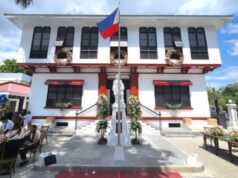“Pres. Aquino devoted four hours asking questions and listening to justifications for the terminal. He just did not want the terminal ending as a white elephant, especially because he is from Central Luzon which hosts Clark airport,” Tanjuatco said.
Tanjuatco said the President was briefed on the new terminal’s benefits to the people of Central and Northern Luzon, as well as on how the expanded passenger terminal could absorb the shortcomings of the Ninoy Aquino International Airport (NAIA).
“We also told him that larger airlines would be easier to convince to establish regular flights at Clark with a more modern and bigger passenger terminal,” he added.
He explained that the P1.2 billion would be for the first phase of the new terminal that would increase Clark airport’s capacity from four million to seven million passengers annually. The total cost of the terminal, designed by Aeroport de Paris, Inc. would be P15 billion when finished by 2022. “It will increase Clark airport passenger terminal floor area by some 50,000 square meters,” he added.
The President is the head of the board of the National Economic Development Authority (NEDA) whose approval of the project was the last step needed for the release of the initial P1.2 billion budget. The board tackled the Clark terminal project from 10 a.m. to 2 p.m. last Friday, Tanjuatco said.
He said the Department of Transportation and Communications (DOTC) is likely to seek from the Commission on Elections (Comelec) an exemption from the election ban on government project construction to pave the way for the completion of the P1.2-billion first phase of the project by 2017.
“Bidding will be done as soon as the terms of reference are done, and we expect the groundbreaking in June next year,” Tanjuatco said, adding that a consultant would be hired for the construction.
He cited three alternatives for bidding the project. “It could be done by DOTC, but if DOTC is too saddled with other concerns, the bidding could slide to the level of the CIAC,” he said.
Tanjuatco also said that another alternative would be to create a special bids and awards committee composed of representatives from the DOTC and CIAC. “It’s really a big project worth billions, so this could be a justifiable alternative,” he added.
The second phase of the terminal project would increase Clark airport’s passenger capacity to 16 million annually by 2022, he added.




